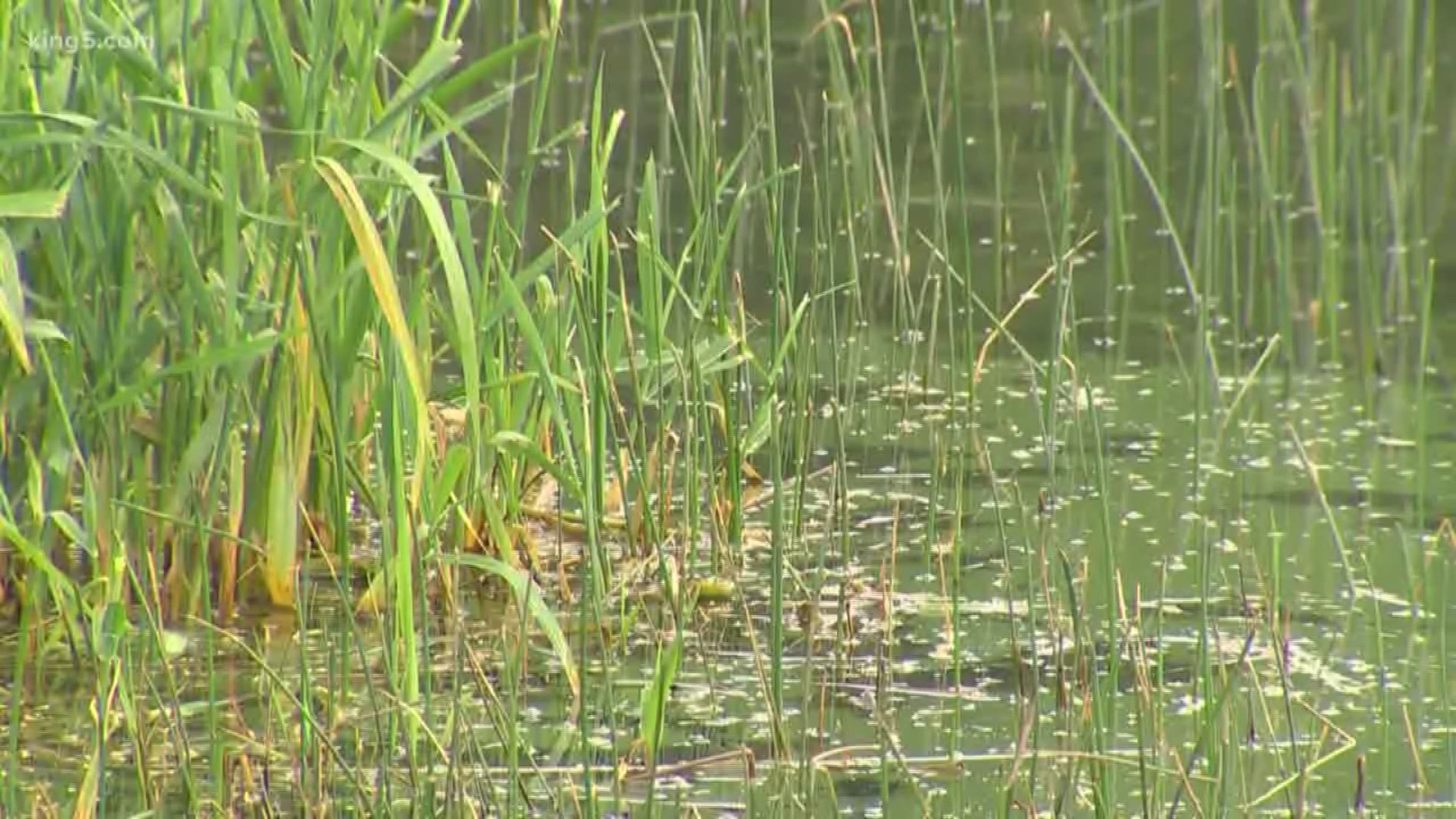SEATTLE —
A handful of dogs have died around the country this week after being exposed to harmful blue-green algae in lakes and ponds.
In most of these cases, owners in Texas and North Carolina said they allowed their dogs to play in the water, unaware of the bacterial danger below the surface.
Almost immediately after the dogs got out of the water, they began exhibiting signs of distress. Owners said their dogs had seizures, diarrhea or vomiting, weakness and difficulty breathing.
Within 24 hours of exposure, the dogs perished.
As dog owners continue to enjoy the summer and warm weather, it’s important to know what blue-green algae is and how to spot it.
Blue-green algae is actually a bacteria called cyanobacteria and when it spreads in a body of water, it can produce a blue-green color in the water or the kind of thick, green layer that has the appearance of “pea soup.” Water with blue-green algae often stinks, too.
This water can be deadly to animals, specifically dogs. The bacteria attacks a dog’s liver and causes it to shut down, which is the ultimate cause of death in most cases.
It’s very difficult to treat. There’s no known antidote to the toxins, so typically the only chance you have is to get to a vet who can flush the toxins quickly, usually by induced vomiting. Chances with that are still slim.
Veterinarians recommend rinsing and washing off your dog after swimming in a lake, pond, or river.
However, the best way to prevent these deaths is to avoid water with algae present.
Washington state residents can check to see which bodies of water have reported algal blooms. Residents can also report blooms they spot.
King County also issues freshwater beach alerts for algae levels.
If you’re unsure about whether or not a body of water has blue-green algae, experts say it’s best to avoid contact to be safe.

